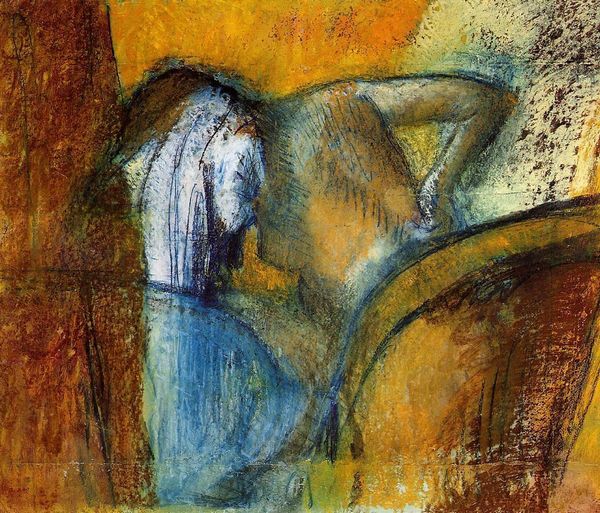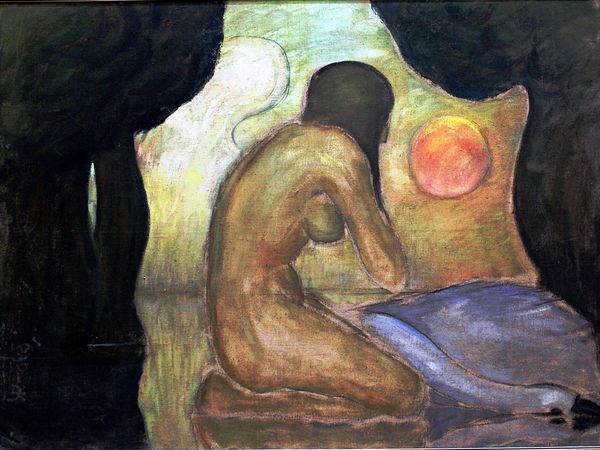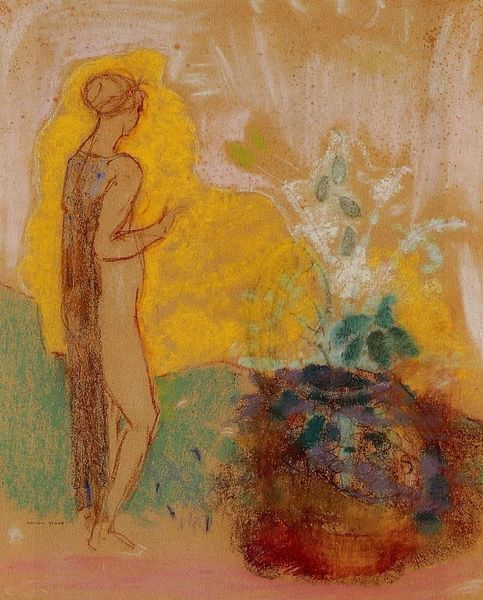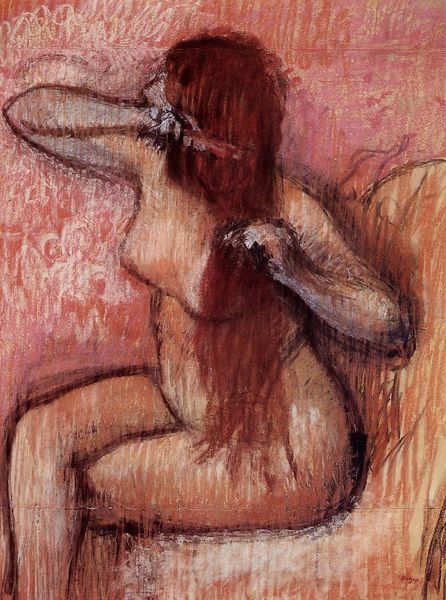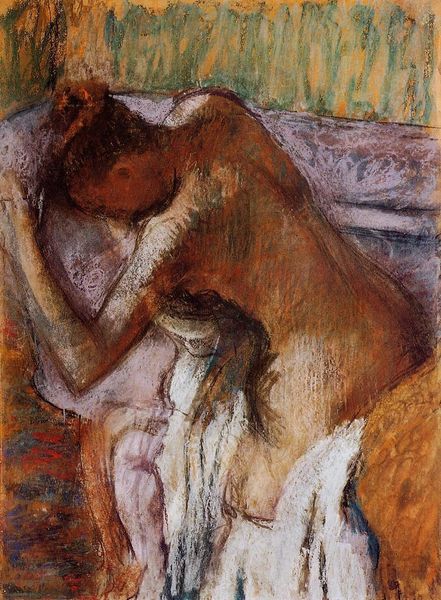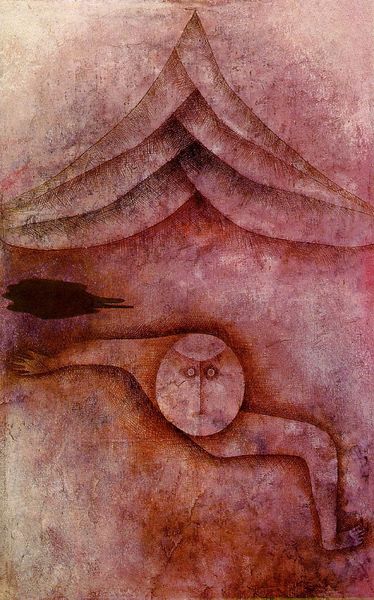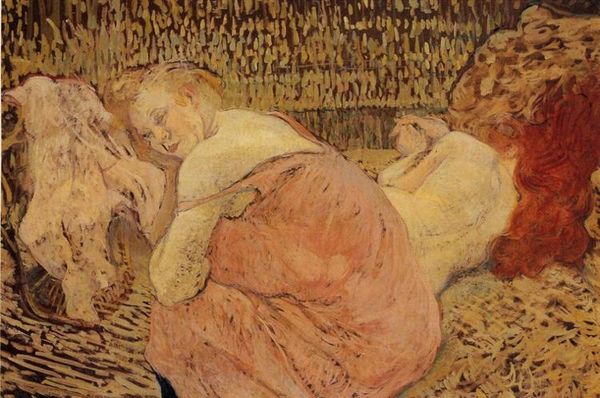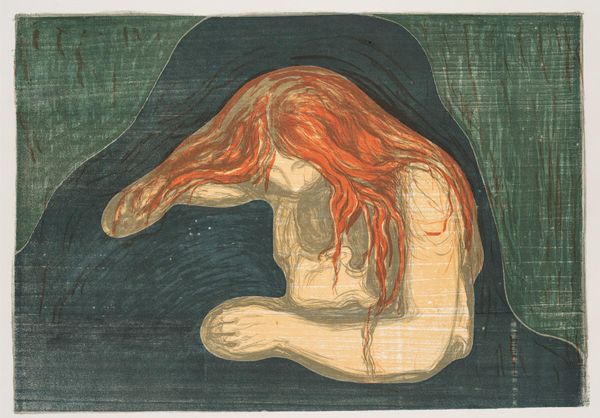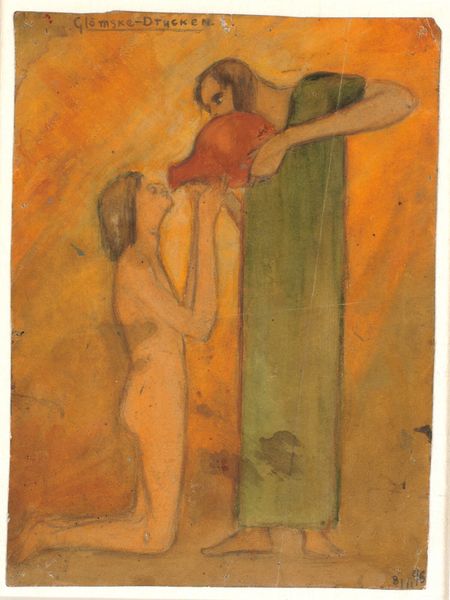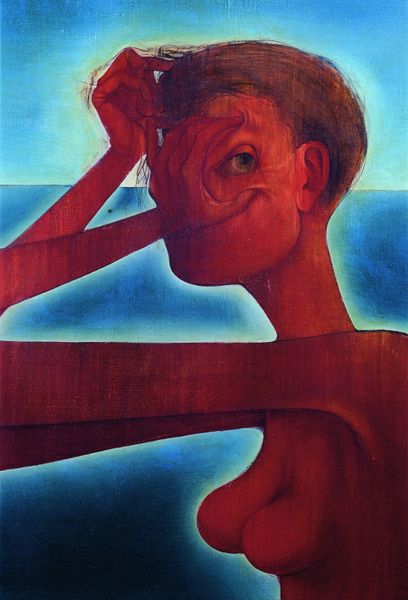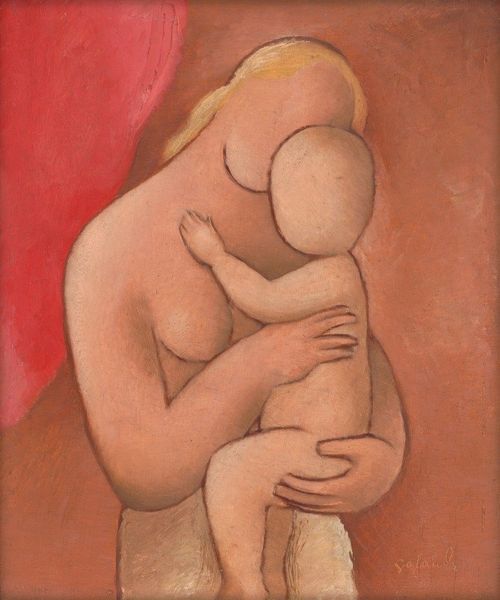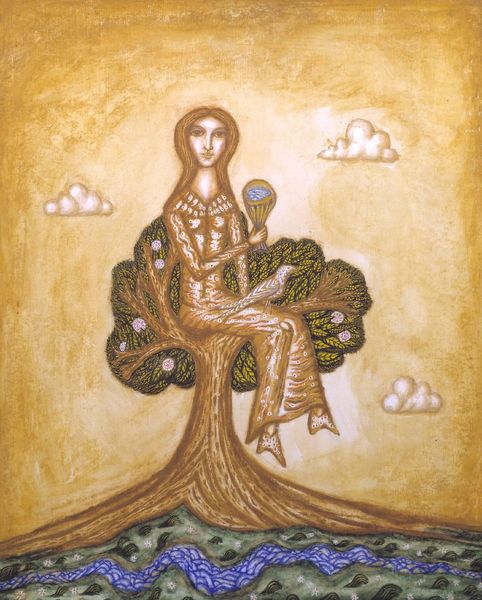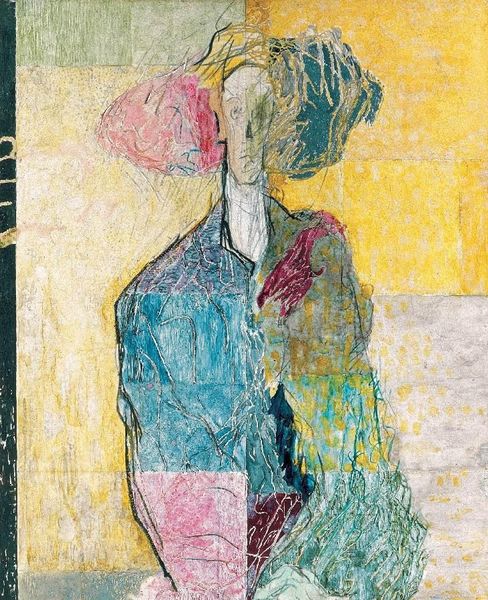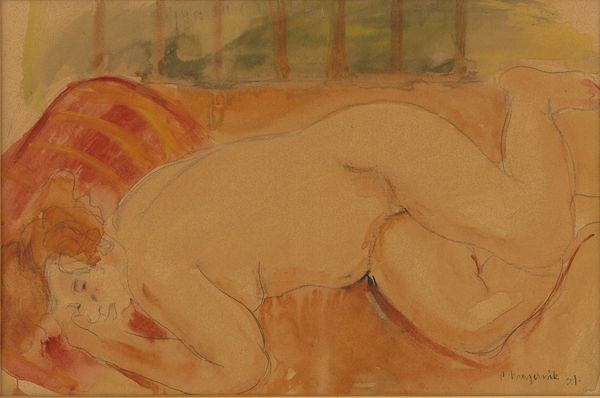
tempera, painting
#
narrative-art
#
tempera
#
painting
#
landscape
#
figuration
#
symbolism
#
russian-avant-garde
Dimensions: 70 x 74.8 cm
Copyright: Public domain
Editor: Here we have Kazimir Malevich's "Prayer," painted in 1907 using tempera. The figures bathed in orange and yellow hues evoke a somber yet warm atmosphere. What do you see in this piece beyond the visual elements? Curator: Well, it is fascinating to consider Malevich within the context of the Russian avant-garde and the sociopolitical climate of early 20th century Russia. Notice how he positions a peasant-like figure against a symbolic landscape; prayer itself was loaded with ideological baggage, especially in a society undergoing secularization. What kind of statement might Malevich be making by presenting this image of devotion? Editor: I guess it's a more complex representation than I initially thought. I assumed the symbolism of prayer was simply religious. Curator: It’s about power, right? The power structures implied, subverted, or reinforced by displays of faith. Consider, for instance, how the rise of industrialism impacted traditional belief systems. Art became a battleground where these anxieties were played out. Editor: So, in that sense, it is both a depiction of prayer, and a commentary of faith itself. Curator: Precisely! Think about how museums legitimized and, therefore, gave credence to certain versions of history and cultural values through the art they selected. Malevich's choice of subject matter and his visual language either challenged or reaffirmed prevailing sentiments depending on its exhibition and reception. What do you make of its visual representation given these ideas? Editor: I find myself drawn to the tension between the seeming simplicity of the style, bordering on primitive, and the complexity of the historical implications you are suggesting. It feels more powerful now, knowing it’s engaging with the shifting social landscape of the time. Curator: Absolutely. The politicization of images—who controls their narrative, who gets to see them—those are ongoing concerns that find resonance in even seemingly simple paintings like this one. Editor: This perspective really sheds a new light on how I approach and think about art, considering its wider impact.
Comments
No comments
Be the first to comment and join the conversation on the ultimate creative platform.
